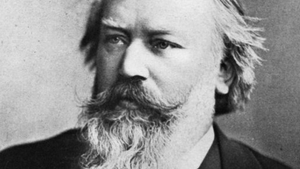 Reviewed by Ewart Shaw, Sunday 22nd August 2021.
Reviewed by Ewart Shaw, Sunday 22nd August 2021.
Alright, Adelaide, where were you? I know it was the first fine Sunday in ages, but you missed a real treat in the Elder Hall. Did the title put you off?
Just Add Bass, and you thought it might be hip-hop noise with 'street cred', featuring someone you'd never heard of.
It was, to borrow a cliché from the world of sport, a concert of two halves. Robert Nairn, whom I suspect brought the whole ensemble together, showed off his dexterity with two short pieces for double bass and strings by composers probably only known to double bass and violone players.
Domenico Dragonetti (1763-1846) was Venetian by birth but spent fifty years as a mainstay of the musical life of London. The brief Andante from one of his many concertos for double bass was charming but evanescent, as was the Elegie in D minor by Giovanni Bottesini (1821-1889). The joy lay in watching Nairn's hands on the double bass as he explored the range available to him.
The string quartet that backed him brought together four very fine local chamber musicians, Helen Ayres, violin,
Michael Robertson and Heidi Von Bernewitz, violas, and Tom Marlin, 'cello. They were then joined by Lachlan Bramble, violin, and Simon Cobcroft, 'cello, for a finely crafted performance of the String Sextet No. 2 in G minor of Johannes Brahms.
This is the second piece in this form that Brahms wrote. The earlier one, in B flat Major, was composed in 1860, and this one across the years 1864 and 1865. The addition of an extra violin and 'cello to the group, gave Brahms the chance to add complexity to the sonority, but also to experiment with internal rhythms. This gives the three pairs of strings a chance to reinforce their identities. In a traditional string quartet, of course, you have two violins who lead the action, but in this configuration, they have opposition from increased violas and 'celli. The work builds like strata, geological and harmonic.
It's in four movements, Allegro non troppo, Scherzo-Allegro non troppo-presto giocoso, Adagio and, finally, a poco allegro. It was performed with the violins stage right, the violas stage left, and the 'celli at centre facing forward. That configuration did not give the 'cellists pre-eminence but certainly allowed me the chance to watch them carefully. I've compared some performances and read through the scores. The second sextet gives the first 'cellist far more opportunities for display than the first sextet. To have an instrumentalist of Simon Cobcroft's stature playing second fiddle to Tom Marlin was a real treat for 'cello aficionados, like me.
Brahms was a canny composer with an eye to the publisher's royalties. He arranged the sextet for piano four hands. Interestingly, it was premiered in Boston Mass. in 1866, one month before the European premiere in Zurich.
I'd happily sit through it again, and a concert with these performers and the two sextets would be a joy. I'd hazard a guess that no more than sixty people enjoyed the concert. It was, as I admitted, a very fine Adelaide Sunday and, for lovers of chamber music, just the start of a week full of delight.
Reader Reviews
To post a comment, you must
register and
login.

 Reviewed by Ewart Shaw, Sunday 22nd August 2021.
Reviewed by Ewart Shaw, Sunday 22nd August 2021.

